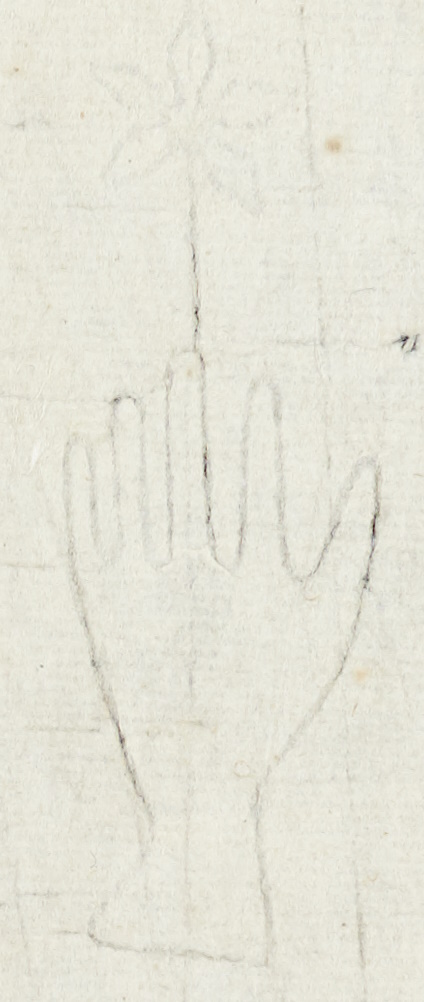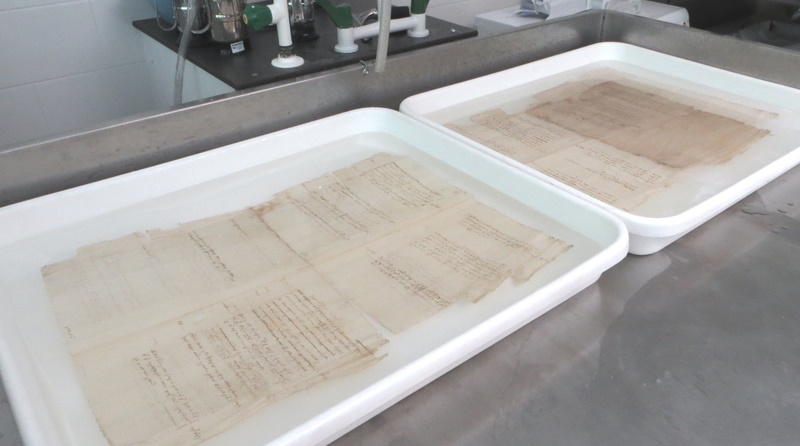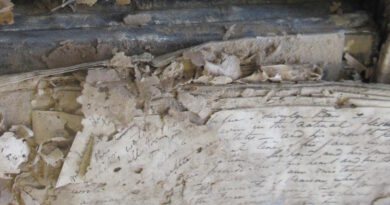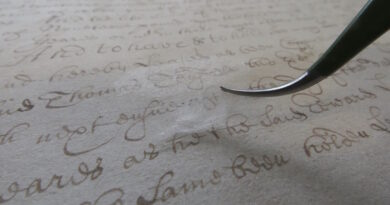Conservation of a Lost Village Rental
Thanks to money given to NorAH in memory of the late David Stannard, a former trustee of the charity, an important document for anyone studying Norfolk’s ongoing battle with the sea, has been conserved and is now available for research. Located on Norfolk’s north-east coast, Eccles-next-the-Sea is one of the county’s lost villages. One of David’s passions was studying its history.
NorAH has funded several conservation projects. It recognises that in order to make some archives publicly accessible, they need intensive conservation work in order to make them safe to handle.
What is the Document?
The document in question is a rental created by the Manor of Eccles in 1486 which is held at the Norfolk Record Office (NRO) and has the reference EVL 673. We know what the document is by reading the top of the first page. Even without knowing any Latin, it is possible to identify ‘Eccles’ in the left-hand corner, and the word ‘rentale’. Archivists at the NRO believe it is a rental which is additional to and ‘extra’ to the dragge of Eccles. Dragge is an East Anglian word for land survey, probably carried out on foot. The second half of the title is the date and can be translated as ‘the month of June in the first year of King Henry VII’, which was 1486; less than a year after the Battle of Bosworth Field and the start of the Tudor dynasty.
A rental usually contains a list of tenant names; the nature of tenure, e.g., freehold or copyhold; and the amount paid. It is a working document created by the day-to-day activity of the Manor of Eccles. Manors are defined by The National Archives as landed estates originating in the Middle Ages. They were administered by and for their lords, with dependent tenants living on the land.
Why was the Rental so Fragile?
The rental is made of paper, which is less robust than parchment. It would have been well used for a short period of time and then put aside. As shown below, the rental was very scrappy; it was folded and torn and any handling would have risked the permanent loss of unique information. For this reason, it was marked as Unfit for Production in the NRO’s catalogue.

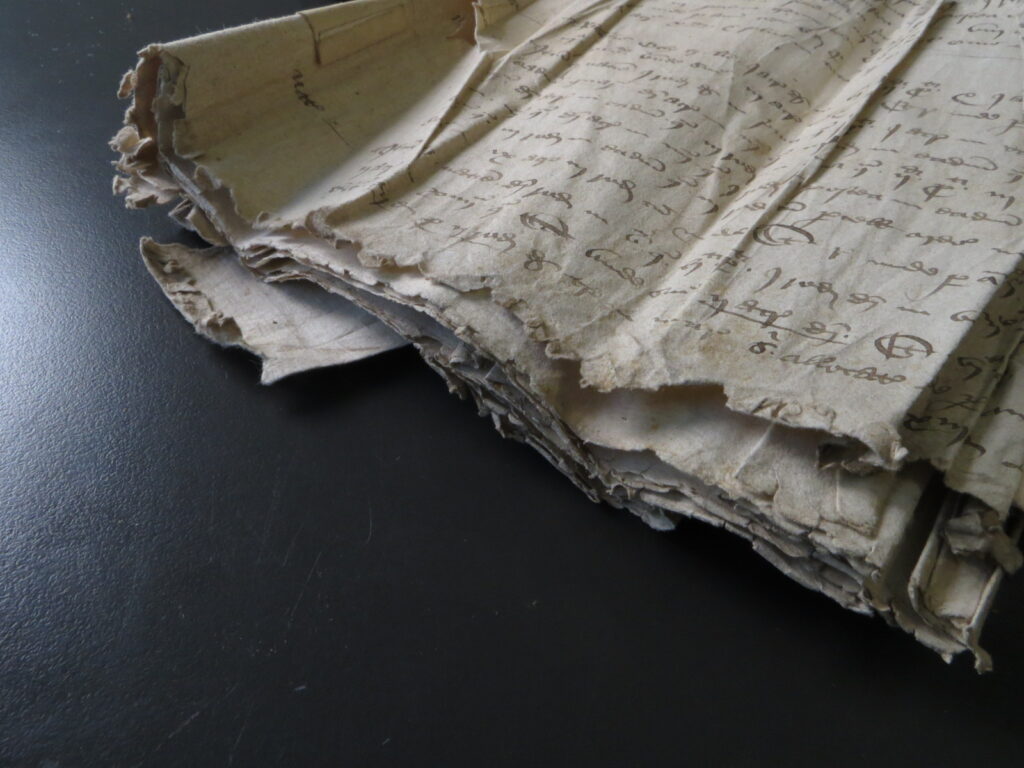
Conservation
The first thing to do to the rental was to carefully separate the component parts, and in doing so, noting the order. It was then relaxed in a humid chamber; washed; flattened and then dried. The final process was to repair tears and stabilise crumbly edges by reinforcing the original paper with light but strong Japanese paper.
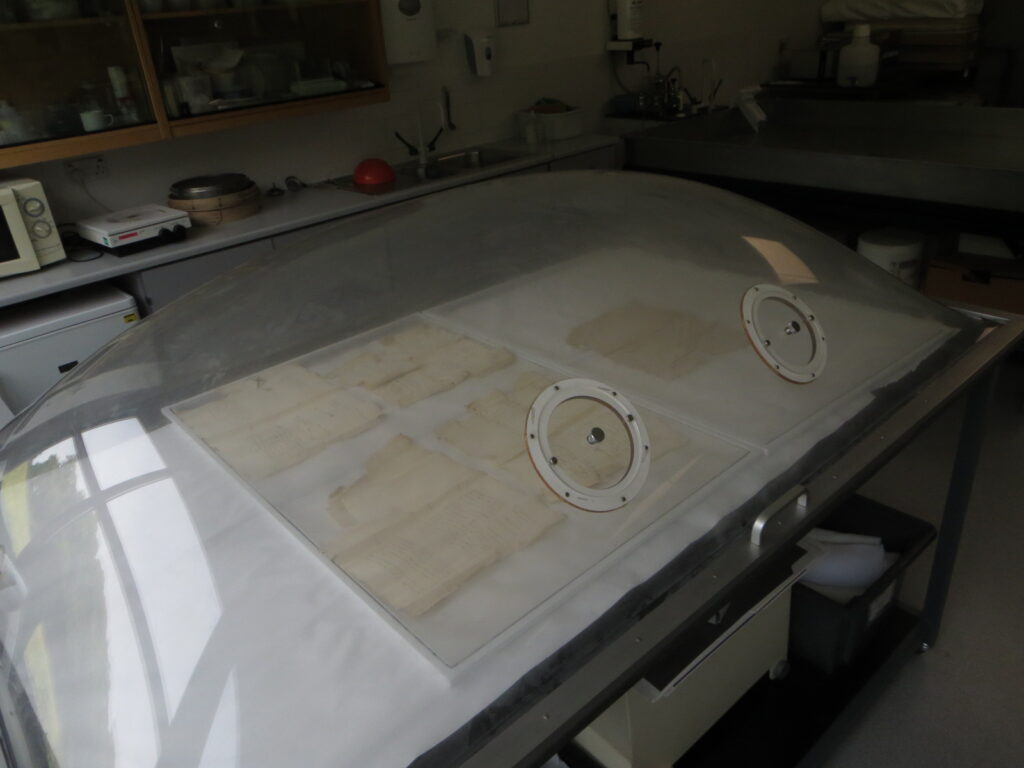
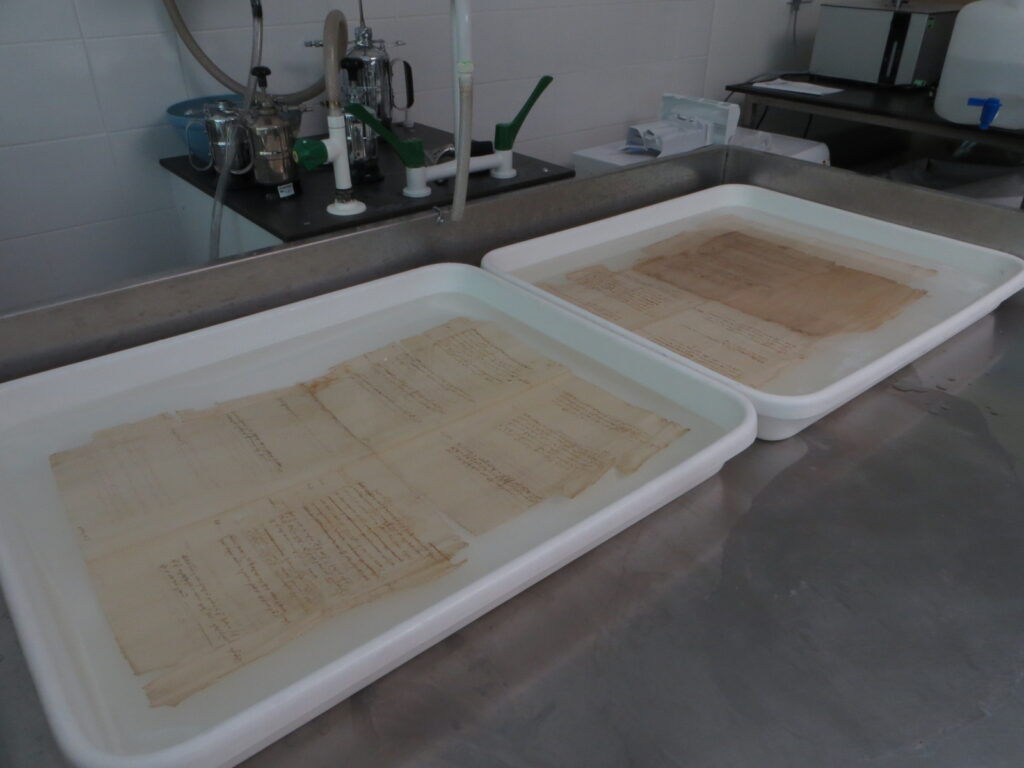
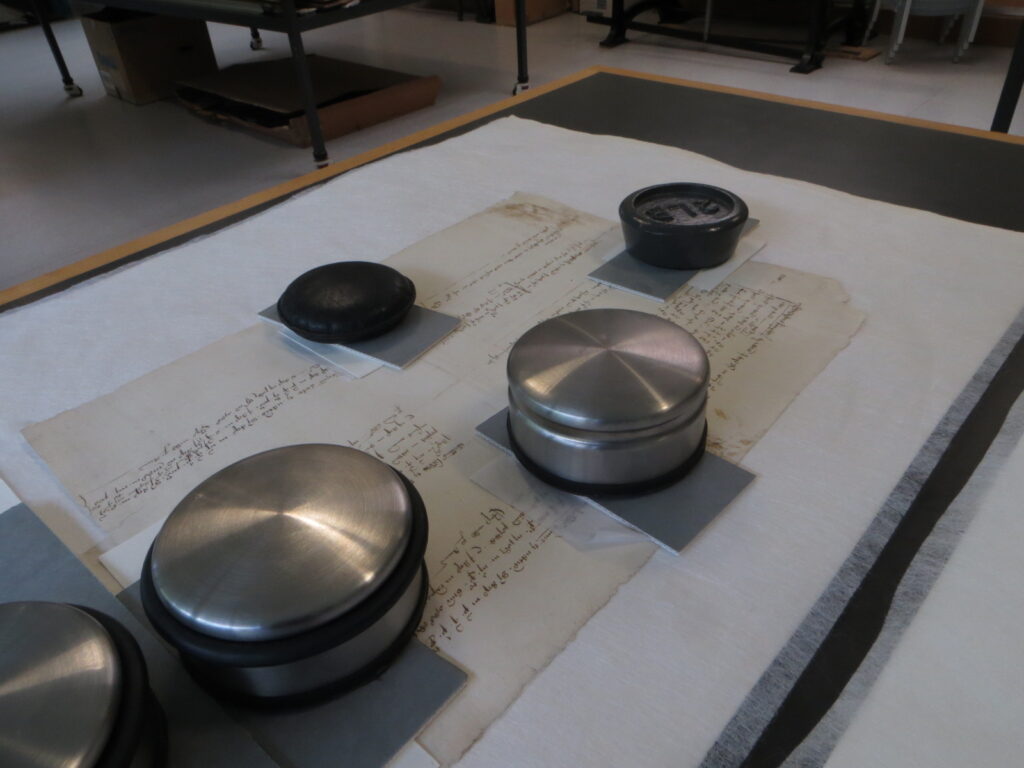

About the Rental’s Content
Once the rental had been conserved, it could be consulted.
Rentals and land surveys are an incredibly rich resource for family and local historians. They give us names which may not be mentioned anywhere else, especially if they date from before parish registers, as in the case of this document. Surveys such as this also help us piece together what the landscape may have looked like. Even though it is written in abbreviated Latin, using unfamiliar letter formations, the formulaic nature of a lot of the entries means extracting meaningful information is straightforward.
A typical entry can be translated as follows.
[Held by Robert Pilgrim] as villain tenure, half an acre in the second furlong of the second precinct. And renders thereafter per annum [with other listed lands] 3 shillings 4½ pence. NRO EVL 673
A Record of Coastal Erosion
Within a century of this document’s creation, we know the church at Eccles was badly damaged by storms, leading to a deed of union in 1571 which joined the parish of Eccles to the parish of Hempstead.
The fact this document dates from the period when Eccles was being claimed by the sea, reinforces its historical significance.
There are six tenants whose holdings were debased by the sea. All were allowed varying amounts against their rents. For example, Robert Pilgrim, for one of his holdings, is allowed 5½ pence, a hen and 20 eggs from his rents.
An added benefit of conserving the rental is we can now see the paper’s watermark. It shows a gloved hand with a flower. A comparison with similar watermarks of the same period, suggests the paper was manufactured in Europe, possibly Sicily. The first English papermill dates from this period, further suggesting it originated from abroad.
